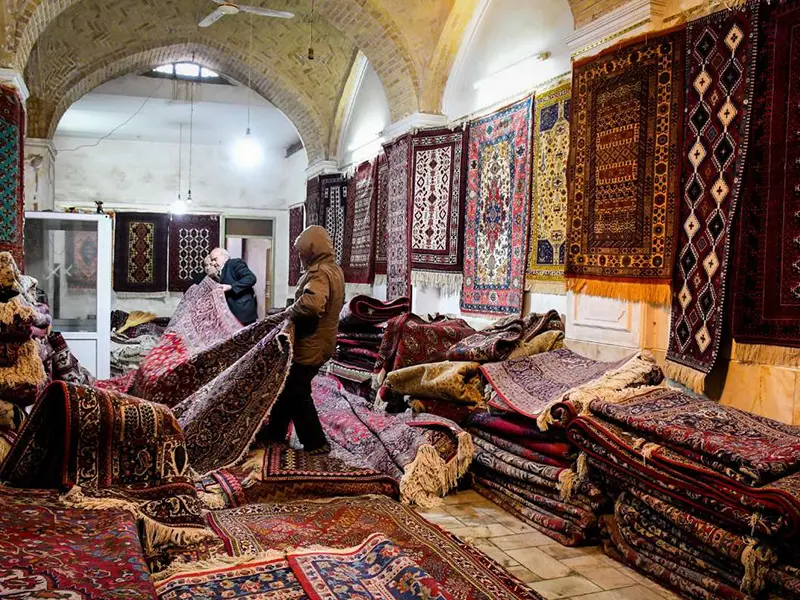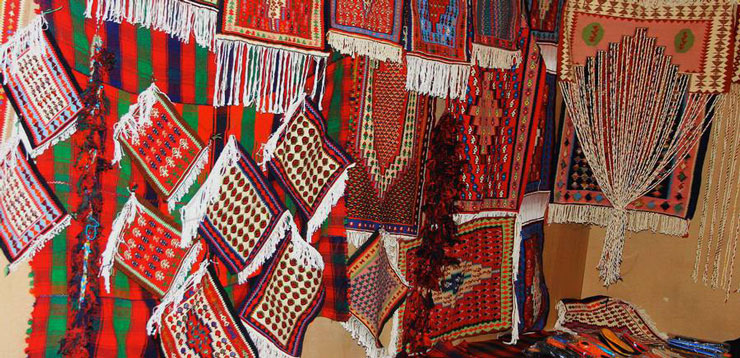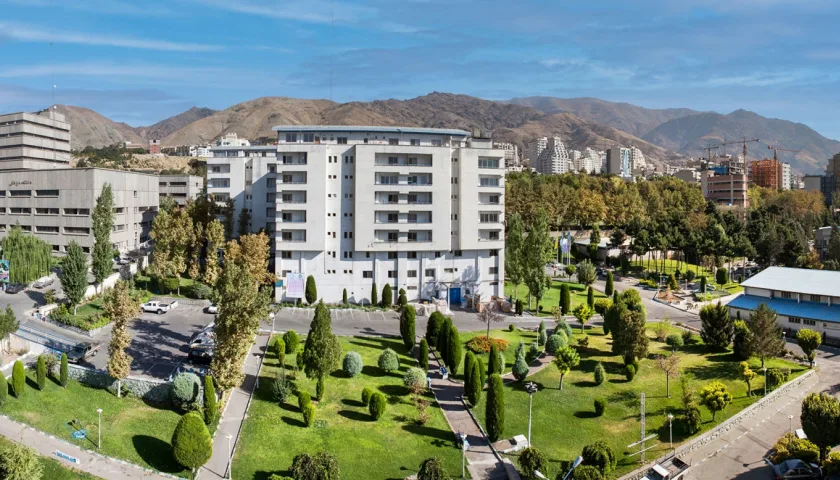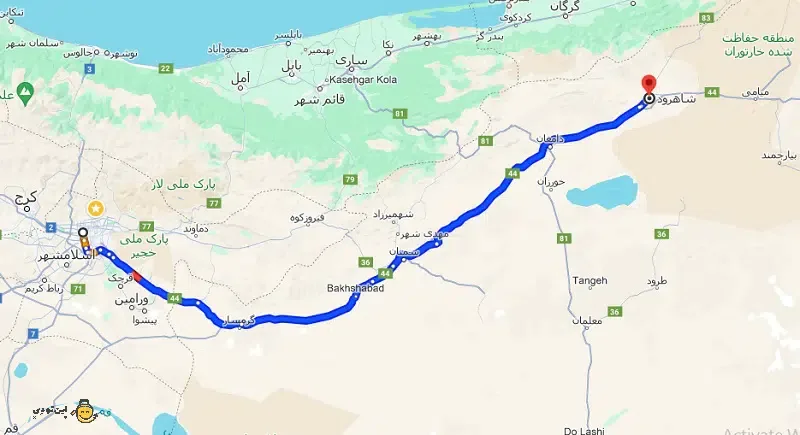Discover the Beauty of Hoze Sultan Lake: Iran’s Natural Mirror Just 40 km from Qom”
Salt lakes are one of the most amazing elements of nature, formed through intense evaporation and abundant salt deposits in water sources. Due to its dry and desert climate, Iran is home to many of these lakes, among which one of the notable attractions in Qom is Lake Hoze Soltan.
Where is Lake Hoze Soltan?
Address: Qom Province, 40 kilometers north of Qom city, along the Persian Gulf Highway.
One of the natural areas of Iran, located not far from Tehran and known as the largest mirror in Iran, is the salt lake called Hoze Soltan. This lake is considered one of the attractions of Qom and is situated 40 kilometers north of Qom city, 85 kilometers south of Tehran, and along the Persian Gulf Highway.
Accessing Lake Hoze Soltan
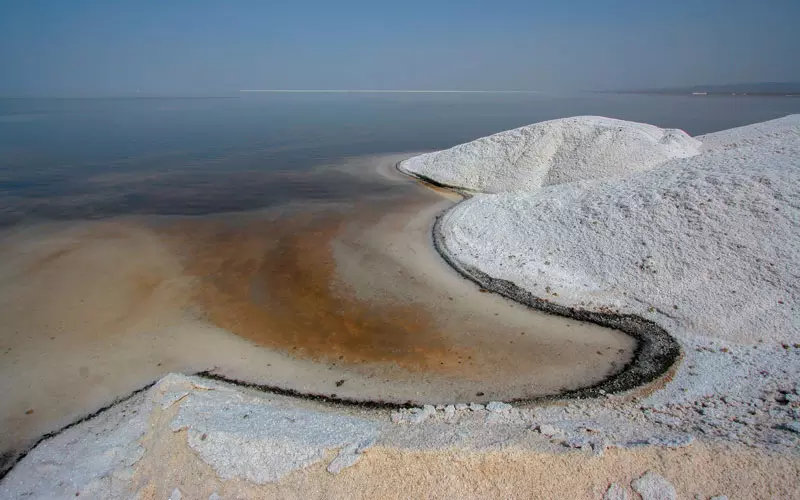
There are several routes to reach Lake Hoze Soltan, with two main driving routes being the most well-known:
First Access Route: When traveling from Qom, after passing the Mahtab Complex and the first hill overlooking the lake, a dirt road leads down to the lake right next to the second hill. This road is the main road to the salt mine (95 kilometers from Tehran). One of the landmarks for this exit is the sign indicating “95 kilometers remaining to Tehran.”
Second Access Route: When traveling from Tehran and after covering 70 kilometers from the city, a road heads left toward the village of Cheshmeh Shoor, marked by a tourism information sign on the highway. To reach the opposite side of the highway, take the first underpass.
About Lake Hoze Soltan
Lake Hoze Soltan, also known as “Shahi Lake,” has an approximate area of 240 square kilometers and is located south of the Alborz mountain range. The size and shape of the lake vary according to water inflow and rainfall during different seasons, causing the water level to fluctuate continuously. The lake consists of two separate basins: the western basin called “Hoze Soltan” and the eastern basin called “Hoze Mareh,” which are connected by a waterway. In the rainy season, the Hoze Mareh fills up first, and then the excess water flows into Hoze Soltan.

Lake Hoze Soltan acts like a large mirror in the heart of Iran. It sits at an elevation of 820 meters above sea level, which remains relatively uniform across the lake. Several rivers flow into Lake Hoze Soltan, generally passing through the surrounding salty marshland, including the “Shour River” and “Ghareh Chai.” There is a dirt road 35 kilometers along the Qom-Tehran route that leads to the lake. Inside the lake, there is a dirt path used to prevent vehicles from sinking into the marsh and to facilitate salt extraction. Due to its high salt content, the lake is often referred to as the salt lake, although a much larger salt lake is located southeast of Qom. A significant amount of salt is extracted from Lake Hoze Soltan annually.
Hoze Soltan was formed in 1883 due to the construction of the Tehran-Qom road. “Lake Saveh” is another name given to Hoze Soltan, as it is considered a remnant of the great Sea of Saveh.
Flora and Fauna
Plants:
Winter is the high-water season for Hoze Soltan, causing the salty bed of this wetland to be submerged, while the marshy edges have vegetation, particularly observed on the northern and northwestern sides. Studies have identified over 40 plant species in the area, including desert wormwood, saltwort, yellow and black tamarisk, soda, and spinach.
Animals:
Rare migratory birds inhabit the marsh, including bustards, various pigeons, gray geese, flamingos, storks, and various eagles. Mammals such as rabbits, field mice, foxes, and occasionally deer can also be found in the area. Among reptiles, snakes and lizards are common and play a role in biological pest control.

Microorganisms:
The wetland hosts over 240 species of valuable aerobic microorganisms, including algae, bacteria, and fungi, which can withstand the highly saline conditions. The presence of diatoms (single-celled algae) as the primary producers of food in aquatic ecosystems is significant in the saline waters of Hoze Soltan; these algae can be used in livestock feeding if produced in large quantities. Studies indicate a diverse and abundant presence of halophilic bacteria in the region’s soils, some of which are unique and potentially valuable for their genetic and physiological characteristics, especially in terms of enzymes, antibiotics, and microbial products. Additionally, various spiders, scorpions, termites, and rare ants are widespread around the lake.
Recreation and Facilities at Lake Hoze Soltan
There are no specific recreational facilities around Lake Hoze Soltan, and visitors should bring all necessary equipment with them. The best accommodation option while visiting Lake Hoze Soltan is to stay at the rural houses of Cheshmeh Shoor and Sefraabad or utilize the numerous hotels in Qom. Camping and pitching tents in nature are also suitable options for nature enthusiasts.
Visitors can walk through the lake, thanks to its shallow depth, heavy sediment, and muddy, marshy surface, which makes boating or driving safari vehicles impractical. However, cycling is one of the best activities in this area, offering a unique cycling experience in Iran. Visitors can enjoy the stunning natural mirror of Lake Hoze Soltan, capturing breathtaking images. The lake is also a popular destination for birdwatching, making it an excellent option for nature and wildlife enthusiasts.
Best Time to Visit Lake Hoze Soltan
The best seasons to visit Lake Hoze Soltan are early spring and mid-autumn. During these times, tourists can enjoy the area’s beauty while avoiding the harsh cold of winter and the scorching heat of summer.
Tips for Visiting Lake Hoze Soltan
Never travel alone to Lake Hoze Soltan.
Due to the lack of defined depth and deep holes in many areas, drowning is a risk in Lake Hoze Soltan.
There are no recreational, shopping, or accommodation facilities in the vicinity of Lake Hoze Soltan.
To reach the heart of the lake, you’ll have to cross muddy paths, which will leave salt residues on your shoes and clothing for a long time. Therefore, avoid wearing formal shoes and pants.
Complete desert trekking gear is necessary for visiting Lake Hoze Soltan.
Refrain from traversing unknown paths during your visit to Lake Hoze Soltan.
Avoid harming the nature of Lake Hoze Soltan and strive to preserve its unique ecosystem.
Visiting Lake Hoze Soltan is free of charge.
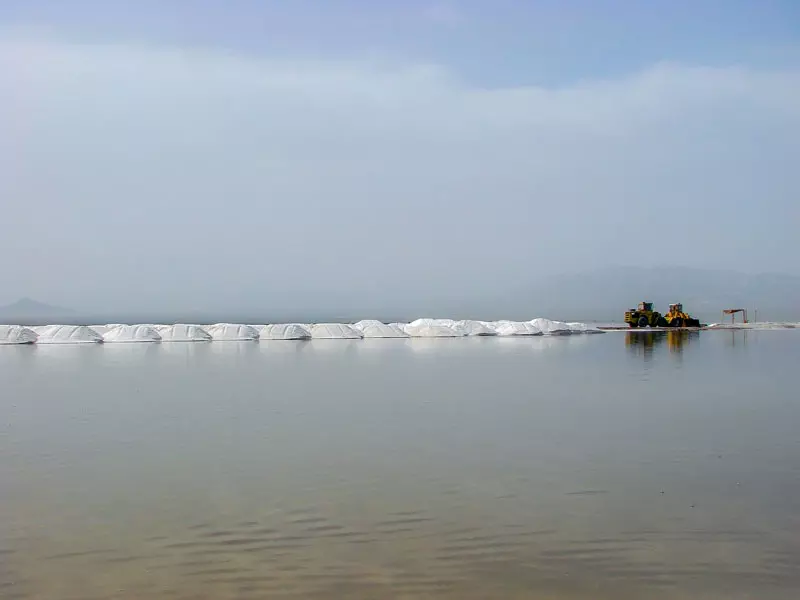
Attractions Around Lake Hoze Soltan
Pasangan Caravanserai
Address: Qom Province, Qom County, 20 kilometers along the old Qom-Kashan road, Jannat Abad village, Zamburak
One of the historical remnants from the Safavid era in Qom Province is the Pasangan Caravanserai, located in Jannat Abad. The eco-lodge at Pasangan is one of the economical accommodations in Qom. Other uses of this complex include a tea house, an astronomical observation base, and a center for holding festivals and celebrations.
Jamkaran Mosque
Address: Qom Province, 6 kilometers from Qom city, Jamkaran village, end of Ayatollah Khomaini Boulevard
Jamkaran Mosque, over a thousand years old, consists of various sections, including the Mosque of Maqam, prayer halls, several Hosseiniyahs, a marketplace, a pilgrim house, a records office for miracles, a specialized library, and more. The construction of this mosque, considered one of the most important Shia pilgrimage sites in the world, is attributed to Hojjat ibn al-Hasan (may Allah hasten his reappearance). Throughout the year, Jamkaran hosts numerous mourning ceremonies and religious celebrations.
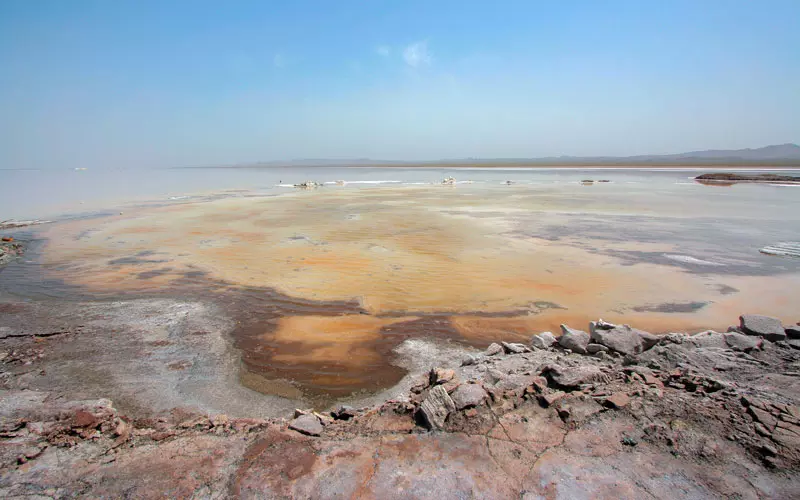
Frequently Asked Questions
Where is Lake Hoze Soltan located?
Lake Hoze Soltan is located 40 kilometers north of Qom city, 85 kilometers south of Tehran, and along the Persian Gulf Highway.
What is the area of Lake Hoze Soltan?
The area of Lake Hoze Soltan is 240 square kilometers.
How was Lake Hoze Soltan formed?
Lake Hoze Soltan was formed in 1883 due to the construction of the Tehran-Qom road.
What is the cost of visiting Lake Hoze Soltan?
Visiting Lake Hoze Soltan is free.


